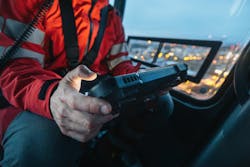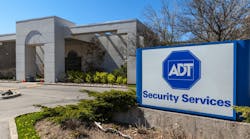With a threat environment that is constantly evolving, the security industry is beginning to push out solutions designed to get eyes and ears on potential threats more quickly to help first responders.
Eagle Eye Networks introduced the newest solution Tuesday with Eagle Eye 911 Camera Sharing, which gives emergency center communicators instant access to security cameras during an emergency – potentially allowing them to relay more precise details to first responders to improve their response.
The tool is being offered by EEN through RapidSOS, an intelligent safety company that uses artificial and human intelligence to fuse life-saving data from some 540 million connected devices, apps and sensors from more than 200 global technology companies to approximately 16,000 field responder agencies covering 99% of the U.S. population.
Security cameras are becoming more ubiquitous at schools and businesses but 911 operators may not be able to access them in an emergency.
Some manufacturers have been searching for similar solutions for years. Eagle Eye Networks CEO Dean Drako recalled a program his company created, Eagle Eye First Responder, that allowed people to enter the emails of first responders in their phones and simply press a button to send a message about an emergency.
It had only very modest adoption, Drako recalls, as most people didn’t know who the right people were to contract.
“I’ve been looking for a solution to achieve this because we all know first responders have a really hard job. They show up in a situation and don’t know exactly what they’re walking into,” Drako says. “But yet we have all these cameras and they could walk in much more prepared in a lot of situations.”
“I think this will actually help first responders and our E-911 telecommunicators do a better job and it's going to make the world safer.”
For the technology to work, the first step is for schools or businesses to pre-determine which cameras are shareable with 911 Camera Sharing. A 911 call triggers an alert that enables emergency communicators to immediately view footage from cameras at or near the crime scene.
Video may be available from multiple sources, including any businesses near the crime scene.
According to EEN, the technology will work on about any surveillance camera – even analog – if it’s connected to the cloud and there has been a 911-triggered emergency.
EEN said some of the first organizations to adoptEagle Eye 911 Camera Sharinginclude schools and universities, retail outlets, facilities with lone workers and businesses that may be unstaffed at certain hours of the day, such as 24-hour gyms.
Camera video is only accessible during a 911 emergency and emergency communication centers cannot retrieve, save, or view video after the emergency, EEN says. The company says there is no need to share individual IP addresses or NVR/DVR/camera logins with dispatchers, and any video accessed by 911 telecommunicators is tracked in the Eagle Eye VMS Audit Log, the company says.
Additionally, schools and businesses do not have to be current customers of Eagle Eye Networks to take advantage of this technology, as this feature is also available to non-Eagle Eye Cloud VMS customers asEagle Eye 911 Public Safety Camera Sharing Complete.
For existing customers, Eagle Eye 911 Camera Sharing is available for a small per-camera fee and/or is included in the Professional and Enterprise Editions of the Eagle Eye Cloud VMS. Initially, the 911 camera sharing products will only be available in the U.S.
“First responders do extraordinary work managing hundreds of millions of 911 calls annually,” said RapidSOS CEO Michael Martin. “Now, responders can see directly from the location’s surveillance camera what is occurring at the scene of an alarm or a 911 call, verify the emergency and provide visual contextual information to field responders – transforming their ability to respond.”
Drako says all its integrators and resellers can sell and support this kind of functionality as an add-on feature. “So now it's a product differentiator that you can't get with your standard VMS, DVR or NVR, which we now enable,” he says.
It will need to be emphasized with customers that the cameras they designate are functioning properly and haven’t been damaged or having connection issues.
Although some customers or even rights groups may bring up privacy concerns, Drako notes the program is voluntary and the company is allowing customers to make the call on this issue.
“There’s a whole slew of cybersecurity and privacy protections built into Eagle Eye 911 Camera Sharing to make sure only the 911 communicators get access to a camera during this period of time,” Drako says.
“We've taken a lot of encryption protocol and security keys to put around this to make sure it is tightly cyber secure between us and the nine-one-one centers.”
John Dobberstein is managing editor of SecurityInfoWatch.com and oversees all content creation for the website. Dobberstein continues a 34-year decorated journalism career that has included stops at a variety of newspapers and B2B magazines.




